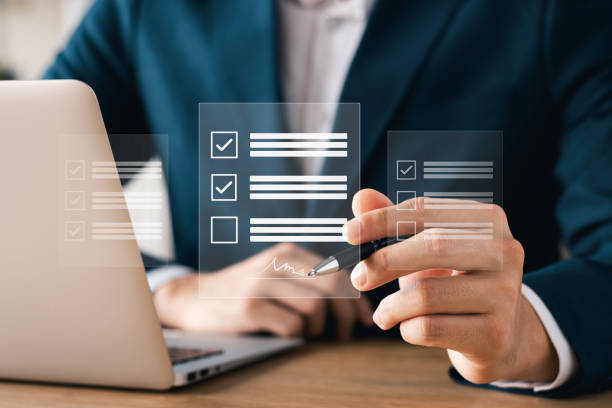A Comprehensive Introduction to On-Page SEO and Its Importance
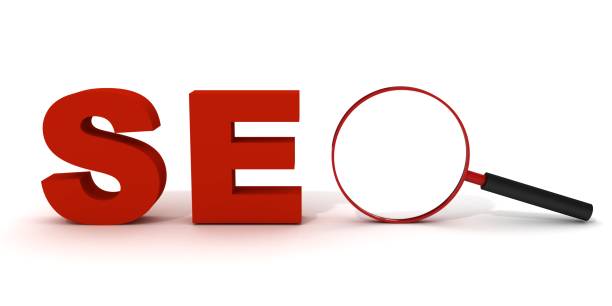
On-page SEO, or on-page optimization, is a set of techniques and actions performed within your website to improve its ranking in search engine results and attract more organic traffic.
Unlike off-page SEO, which focuses on backlinks and off-site signals, on-page SEO is entirely under your control and includes optimizing content, HTML code, and site structure.
This educational section helps you understand why #on-page SEO is the cornerstone of any successful digital marketing strategy.
Without a strong foundation in on-page SEO, even the best off-page SEO strategies cannot reach their full potential.
Search engines like Google aim to provide the best and most relevant results to their users.
This is where on-page SEO comes in; by optimizing the internal elements of web pages, you help search engines better understand the topic, structure, and quality of your content.
This deeper understanding leads to higher rankings and the display of your site to your target audience.
From keyword optimization to improving site speed and user experience, every component of on-page SEO plays a vital role in your online success.
In other words, search engine optimization in the internal part of the site is a way to tell Google and other engines, “We are here and have the best content for your users.”
Tired of your e-commerce website not generating as much revenue as it could? Rasaweb, specializing in professional e-commerce website design, solves this problem permanently!
✅ Increased sales rate and revenue
✅ High load speed and unparalleled user experience
⚡ Get free e-commerce website design consultation
Keyword Research for On-Page SEO Success
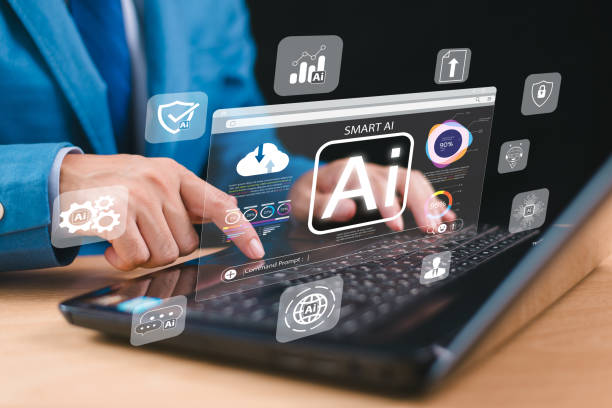
Keyword research is the backbone of any successful on-page SEO strategy.
This process involves identifying the phrases and words that users use when searching the internet.
The goal is to find keywords that have both a good search volume and a strong connection to your content.
A analytical and comprehensive approach is essential at this stage.
You should also look for Long-Tail Keywords, which, although they have lower search volume, result in higher conversion rates because users search for them with a specific purchase intent or to find very specific information.
Tools like Google Keyword Planner, Ahrefs, Semrush, and KWFinder can be of great help in this journey.
Understanding user search intent is also crucial; is the user looking for information (Informational), intending to buy (Commercial), or looking to navigate to a specific website (Navigational)? Matching your content with search intent not only helps improve your ranking in search results but also significantly enhances the user experience.
Strong keyword research allows you to create content that precisely meets the needs of your audience, and this is a fundamental step in improving your website’s on-page SEO.
Optimizing Title Tag and Meta Description in On-Page SEO
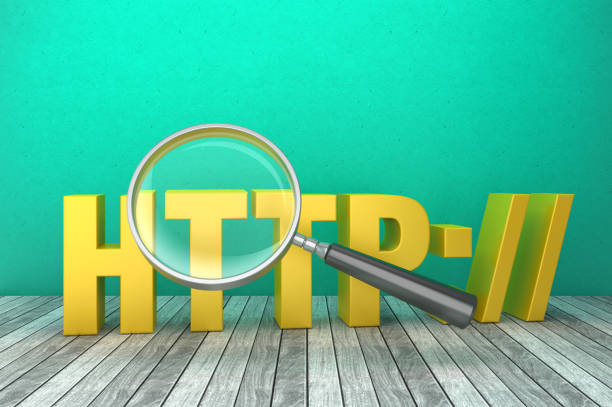
Title Tag and Meta Description are the first impressions users and search engines have of your page.
Optimizing these two elements is considered the most crucial part of on-page SEO.
The title should include the main keyword of the page and be less than 60 characters (approximately) to be fully displayed in search results.
This title should be attractive, accurate, and descriptive to encourage users to click.
The meta description is also an engaging summary of the page’s content that encourages users to click.
Although the meta description does not directly affect ranking, it strongly influences the click-through rate (CTR), which is itself an important ranking signal for Google.
The ideal length for a meta description is around 150-160 characters.
In this explanatory section, we show you how by observing these tips, you can improve your click-through rate and drive more traffic to your website.
Using a Call-to-Action (CTA) in the meta description can also be very effective.
Remember that each page should have its own unique title and meta description.
These steps are essential for any successful on-page SEO strategy.
| Feature | Title Tag | Meta Description |
|---|---|---|
| Main Goal | Direct effect on ranking, display in browser tab | Increase Click-Through Rate (CTR), content explanation |
| Ideal Length | Approx. 50-60 characters | Approx. 150-160 characters |
| Keyword Importance | Very important, preferably at the beginning | Important, but not as much as the title |
| Display in SERP | Blue clickable title | Gray text below the title |
URL Structure and the Importance of Internal Links in On-Page Optimization

URL structure and the proper use of internal links play a key role in your website’s on-page optimization.
A clean, short, descriptive URL that includes the main keyword is not only more understandable for users but also helps search engines better understand the page’s topic.
Avoid using complex and long parameters in your URL and instead use hyphens (-) to separate words.
For example, a good URL might include a structure like yourwebsite.com/category/post-title.
This is a simple but highly effective guideline.
Additionally, internal links help websites distribute Page Authority among their pages and help search engines discover and index deeper pages of your site.
The internal linking strategy should connect related pages and create a strong semantic network within the site.
Using appropriate Anchor Text relevant to the destination page’s content is of high importance.
This not only improves user experience but also gives search engines stronger signals about the topical relevance of pages, ultimately helping to improve your ranking in search results.
Did you know that 94% of users’ first impressions of a business are related to its website design? With professional corporate website design by **Rasaweb**, turn this first impression into an opportunity for growth.
✅ Attract more customers and increase sales
✅ Build credibility and trust in the eyes of the audience⚡ Get free website design consultation!
Producing Valuable and On-Page SEO-Focused Content
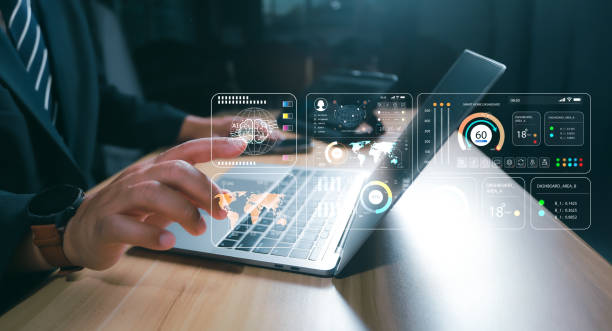
Content is king, and this principle holds true for on-page SEO more than anything else.
Producing high-quality, unique, in-depth, and user-friendly content is the main component of your on-page SEO strategy.
Your content should not only naturally and sparingly incorporate target keywords but also answer users’ questions and meet their needs.
Content that makes users think and engages them, such as thought-provoking content, can increase user dwell time, which is a positive signal for search engines.
Creating entertaining content can also help attract and retain an audience and make users more willing to share your content.
Content should not only be text; using images, videos, infographics, and podcasts can enrich your content and make it more appealing.
Keeping content up-to-date and ensuring information accuracy is also very important.
Optimizing content for readability, using short paragraphs, lists, and subheadings, helps improve user experience and consequently your ranking.
Valuable content that is well-optimized is the cornerstone of success in on-page SEO and will drive targeted traffic to your website.
Image Optimization and Its Impact on On-Page SEO
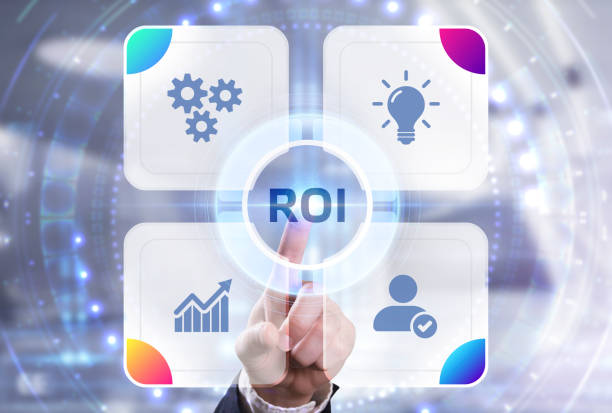
Images play an important role in attracting users and conveying messages, but if not optimized correctly, they can slow down site loading speed and harm on-page SEO.
Image optimization is a specialized skill that involves several key aspects.
The first step is choosing the appropriate image format (such as WebP for web, JPEG for photos, PNG for graphics with transparency).
Then, compressing images to reduce their size without significant quality loss is essential.
Online tools and WordPress plugins can help in this regard.
Alt tag (Alternate Text) is very important for images.
This descriptive text helps search engines and visually impaired users understand the image content.
The image file name should also be descriptive and include keywords (e.g., seo-internal-guide.jpg instead of IMG_001.jpg).
Adding images to the sitemap (Image Sitemap) also helps search engines find and index your images faster.
By observing these tips, you not only improve your site’s speed but also increase the discoverability of your images in Google Image Search, which directly contributes to improving your on-page SEO.
Site Loading Speed and User Experience (UX) in On-Page SEO Strategy

Site loading speed and user experience (UX) are very important factors in modern on-page SEO.
Search engines like Google give higher rankings to websites that load quickly and provide a good user experience.
This topic has even been introduced as important news in the SEO industry.
Today’s users are impatient, and if your site is slow, they will leave it, which leads to an increased bounce rate and decreased time on site, two negative signals for SEO.
Tools like Google PageSpeed Insights, GTmetrix, and Pingdom can help you analyze site speed and identify issues.
Actions such as image optimization, reducing HTTP requests, using browser caching, compressing files (CSS, JS, HTML), and choosing a powerful host can significantly improve your site’s speed.
In addition to speed, responsive design for mobile is also crucial, as most searches are currently performed via mobile devices, and Google also follows a Mobile-First Indexing approach.
A smooth, visual, and unobstructed user experience not only keeps users satisfied but also directly helps improve your ranking in search results and is the cornerstone of successful on-page SEO.
| Factor | Impact on Speed | Impact on UX | Impact on On-Page SEO |
|---|---|---|---|
| Image Optimization | Reduces overall page size | Faster loading of visual elements | Improves Core Web Vitals (LCP) |
| Browser Caching | Reduces loading time for repeat visits | Fast and smooth experience | Positive signal for Google |
| GZIP Compression | Reduces size of text files (CSS, JS, HTML) | Faster loading of site code | Reduces server response time |
| Optimized Coding | Reduces code size and complexity | Faster page interaction (FID) | Improves Core Web Vitals |
Correct Use of Heading Tags (H1-H6) for Content Structure and On-Page SEO
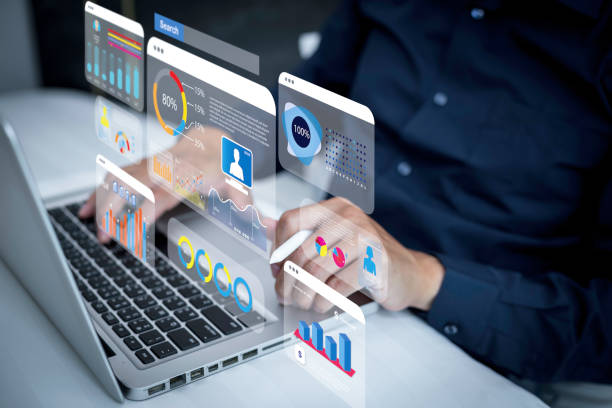
Heading tags (H1 to H6) not only help readers understand your content structure but also assist search engines in comprehending the hierarchy and importance of different sections of your page.
The H1 tag should be used for the main title of the page and should appear only once per page.
This tag typically includes the main keyword of the page.
The H2 and H3 tags are used for subheadings and content segmentation and should include secondary or related keywords.
Logical use of these tags makes your content more scannable and readable, which is a fundamental educational part of increasing user engagement.
This hierarchical structure helps search engine crawlers quickly identify the main and sub-topics of the page.
A good heading structure signals to search engines that your content is well-organized and useful to users.
Avoid stuffing heading tags with irrelevant or excessive keywords, as this can be considered “Keyword Stuffing” and harm your on-page SEO.
Remember that the primary goal of headings is to improve readability and user experience, not merely to insert keywords.
This structural optimization is a vital part of your comprehensive on-page SEO strategy.
Tired of losing customers due to poor e-commerce website design? With Rasaweb, solve this problem permanently!
✅ Increase sales and conversion rate of visitors to customers
✅ Smooth and engaging user experience for your customers⚡ Get free consultation!
Improving Core Web Vitals and On-Page SEO
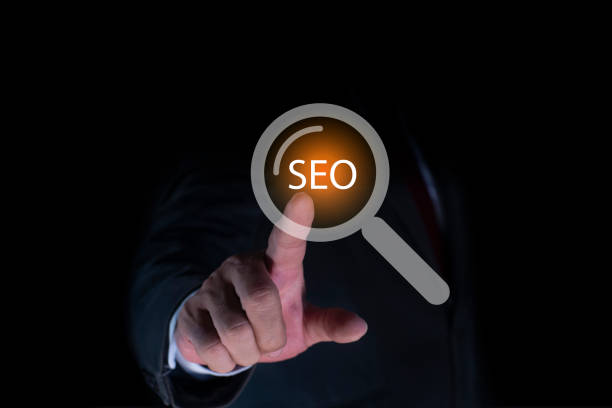
Core Web Vitals are a set of metrics related to the speed, responsiveness, and visual stability of a web page that Google considers as ranking factors.
These metrics include Largest Contentful Paint (LCP) for measuring the loading speed of the main content, First Input Delay (FID) for measuring the site’s responsiveness to the first user interaction, and Cumulative Layout Shift (CLS) for measuring the visual stability of the page.
Improving these three metrics includes the most crucial aspects of on-page optimization.
A precise analytical approach to your site’s Core Web Vitals performance is the first step to improving them.
Tools like Google Search Console and PageSpeed Insights provide the necessary data in this regard.
For improving LCP, image optimization, using a CDN, and optimizing CSS and JavaScript are very important.
For FID, optimizing JavaScript and minimizing third-party code can be helpful.
For CLS, ensuring defined dimensions for images and videos, and preventing sudden content injection are among the main solutions.
These technical actions not only significantly enhance user experience but also show Google that your site prioritizes users, ultimately leading to an improvement in your search results ranking and success in on-page SEO.
Continuous Monitoring and Analysis of On-Page SEO
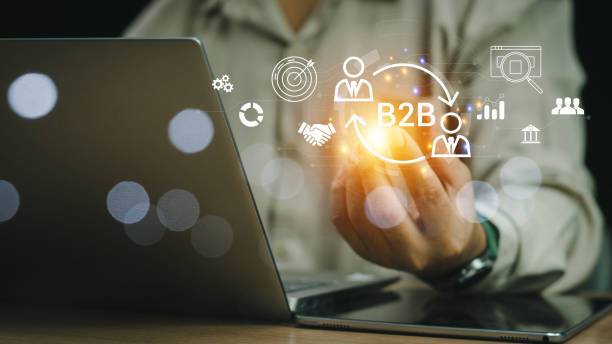
The on-page SEO strategy is not a one-time process but requires continuous monitoring, analysis, and updating.
To ensure the effectiveness of your efforts, you should regularly track the performance of your pages in search results.
Tools like Google Search Console and Google Analytics are vital resources for this.
Search Console provides you with information about the keywords your pages rank for, indexing issues, crawl errors, and Core Web Vitals performance.
Google Analytics also provides valuable data on user behavior, such as bounce rate, time on site, and navigation paths.
An explanatory approach and documenting findings can help you in future decision-making.
By analyzing this data, you can identify new optimization opportunities, such as finding new keywords, improving existing content, or fixing technical issues.
Competition in the online space is constantly changing, so keeping your on-page SEO strategy up-to-date and conducting periodic SEO audits are absolutely essential for maintaining and improving your position in search results.
This continuous monitoring and analysis is the last but most crucial step in a comprehensive and successful on-page SEO strategy.
Frequently Asked Questions
| Question | Answer |
|---|---|
| What is a Meta Title and why is it important in on-page SEO? | The meta title is the most important on-page SEO element displayed at the top of the browser tab and search results. It helps search engines and users understand the main topic of the page and should include the main keyword. |
| What role does the Meta Description play in on-page SEO? | The meta description is a short summary of the page’s content displayed below the title in search results. Although it does not directly affect ranking, its attractiveness can increase the click-through rate (CTR). |
| How should keywords be used in page content? | Keywords should be used naturally and relevantly in strategic locations such as the title, headings, first paragraph, and body text. Avoid excessive keyword stuffing. |
| What is the importance of quality and comprehensive content in on-page SEO? | High-quality, unique, informative, and comprehensive content that addresses user needs is of great importance. Search engines give higher rankings to content that provides real value. |
| What is the use of heading tags (H1-H6) in on-page SEO structure? | Heading tags (H1, H2, H3, etc.) are used to structure content and indicate the importance of different sections. H1 is the main title of the page, and each page should have only one H1. Other tags are used for subheadings. |
| How to optimize images for improved on-page SEO? | To optimize images, use descriptive Alt Text that includes relevant keywords, reduce image file size without significant quality loss, and use meaningful and relevant file names. |
| What are the characteristics of an SEO-friendly URL? | An SEO-friendly URL should be short, readable, descriptive, include main keywords, and be free of unnecessary characters. The URL structure should be hierarchical and logical to be understandable for both users and search engines. |
| How does Internal Linking help on-page SEO? | Internal linking, by connecting relevant pages, helps users and search engine crawlers better understand the site structure, pass page authority, and increase user time on site. |
| What is the impact of page loading speed on on-page SEO? | High loading speed is crucial for both user experience and SEO ranking. Slower pages may be overlooked by search engines and lead to an increased bounce rate. |
| Why is Mobile-Friendliness highly important in on-page SEO? | Due to the increasing number of searches via mobile devices, having a responsive and mobile-friendly site is essential for user experience and ranking in search results (Google’s Mobile-First Indexing). |
and other services of Rasa Web advertising agency in the field of advertising
Smart Digital Branding: A specialized service for growing customer acquisition based on real data.
Smart UI/UX: A professional solution for digital branding focused on optimizing key pages.
Smart Brand Identity: A specialized service for growing click-through rates based on attractive UI design.
Smart Google Ads: An effective tool for increasing website traffic through marketing automation.
Smart Marketing Automation: An effective tool for improving SEO ranking through Google Ads management.
And over hundreds of other services in the field of internet advertising, advertising consultation, and organizational solutions
Internet Advertising | Advertising Strategy | Advertorials
? For your business to soar in the digital world, Rasaweb Afarin, by providing innovative marketing solutions and fast and professional website design, is by your side to ensure a powerful and lasting presence.
📍 Tehran, Mirdamad Street, next to Bank Markazi, Kazerun Jonoubi Alley, Ramin Alley, Plaque 6

